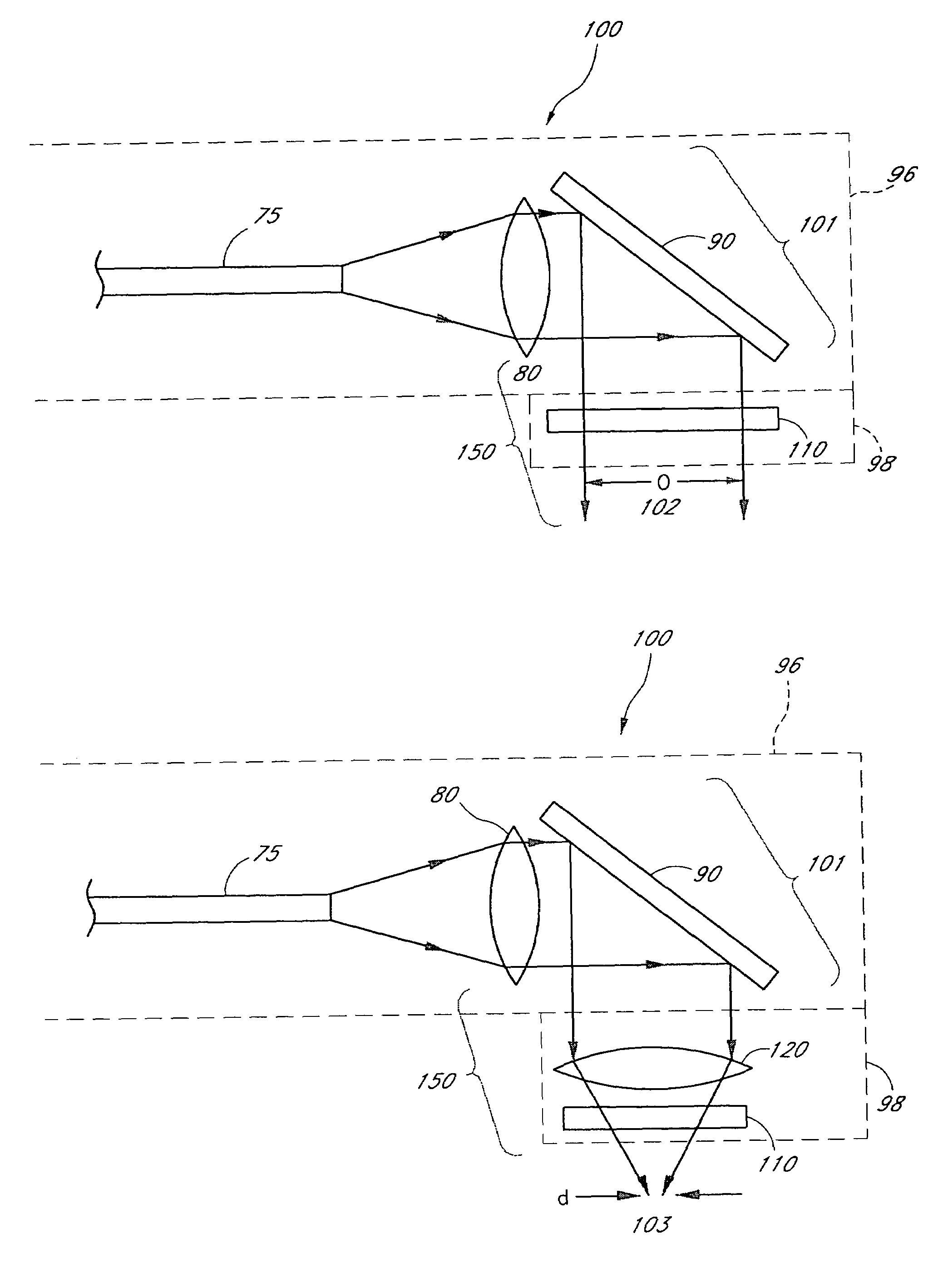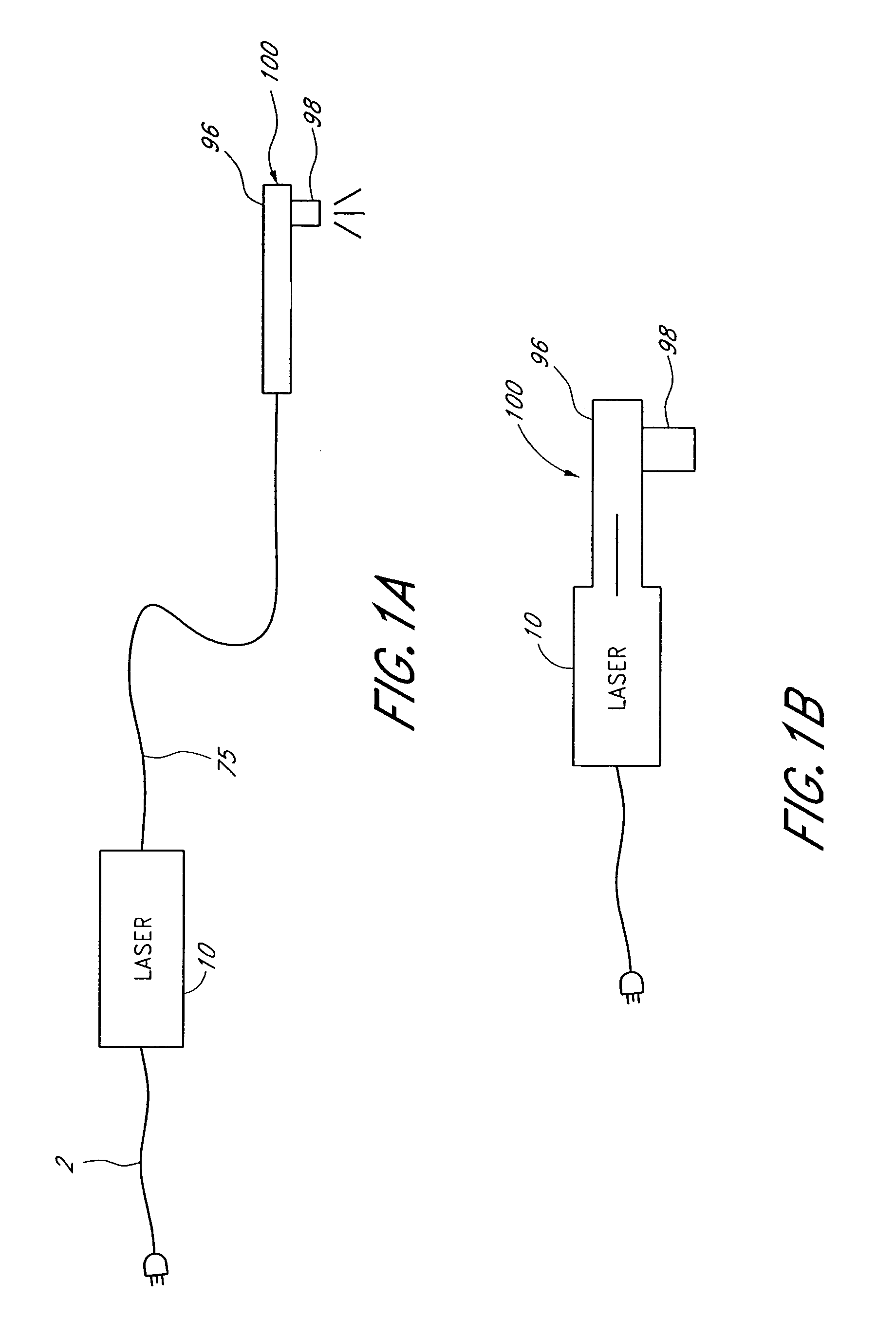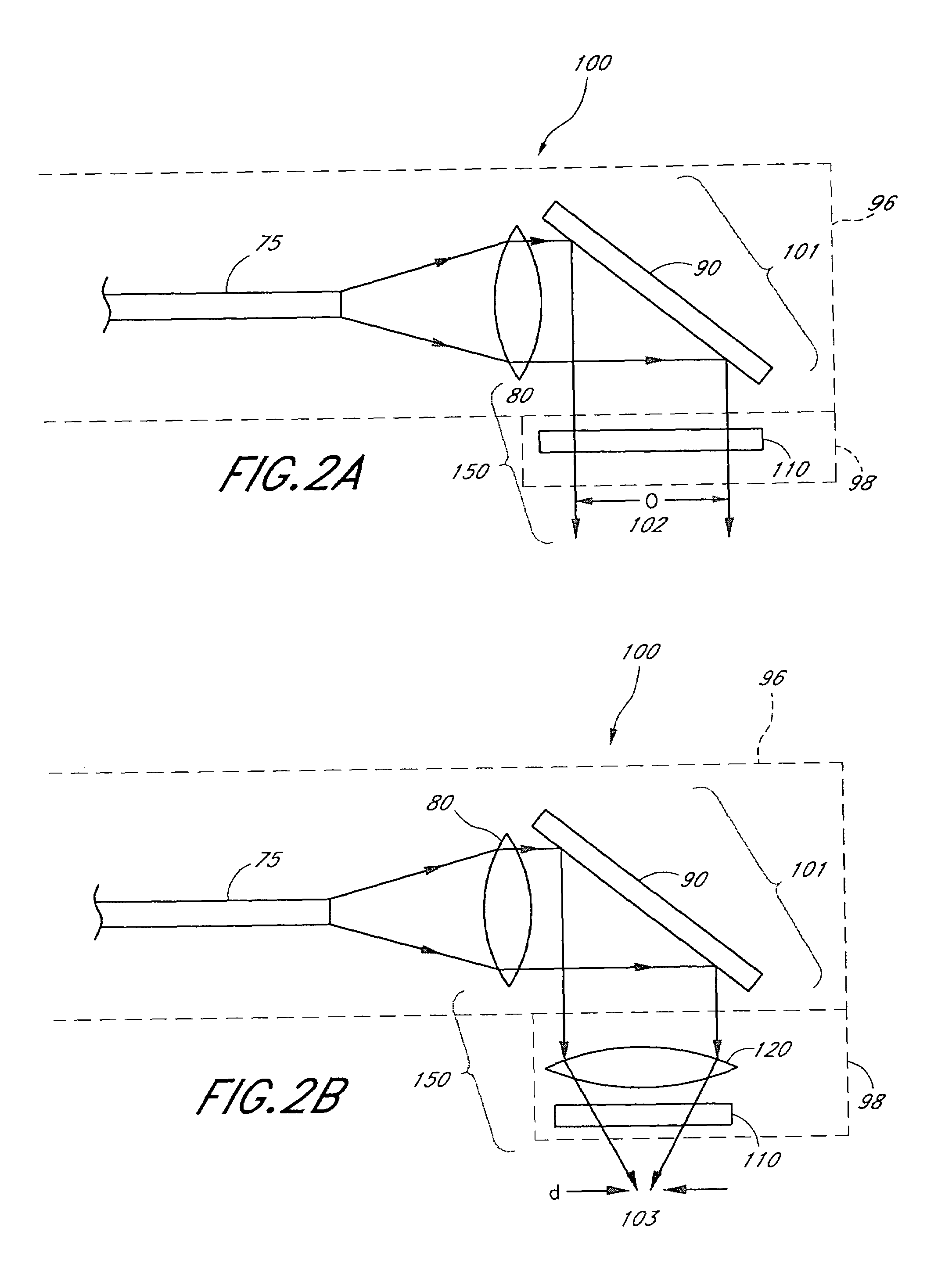Method and laser apparatus for preventing tooth decay
a laser apparatus and tooth decay technology, applied in the field of apparatus and laser apparatus for preventing tooth decay, can solve the problems of ineffectiveness of other methods, inability to individually protect all tooth surfaces, and inability to permanently fix the tooth,
- Summary
- Abstract
- Description
- Claims
- Application Information
AI Technical Summary
Benefits of technology
Problems solved by technology
Method used
Image
Examples
example 1
Treatment of All Surfaces of the Tooth
[0052]The dental professional applies fluoride at a concentration of about 200 ppm Fl of stannous fluoride or 1000 ppm Fl or sodium fluoride. Coherent light from an argon laser is applied to the tooth at 250 to 300 mW for 10 seconds (or longer) at an 8 mm diameter spot size on each of the surfaces. When occlusal and unexposed surfaces are treated the diameter is reduced to 5 mm, preferably by using a tip which produces a smaller spot size. This allows all of the surfaces of the tooth to be treated. Maintenance treatment includes using a fluoride mouthwash containing low concentrations of fluoride once a day, and fluoride patches containing low concentrations of fluoride applied weekly. The teeth are laser treated every 2 to 5 years. The patient may also use a fluoride toothpaste having a low concentration of fluoride. Alternatively, the fluoride composition may be any mouthwash, toothpaste, gel, restorative material, paste, patch, etc. that uses...
example 2
Method of Treating a Tooth Using an Argon Laser or a Visible LED
[0053]Light from an argon laser or LED is applied to the tooth at 250 mW for 0.2 to 10 seconds at a 5 mm to 8 mm diameter spot size on all of the tooth surfaces. Preferably, the treatment lasts from 1 to 10 seconds. The teeth may also be treated with fluoride before and / or after lasing. Maintenance treatment is as in Example 1.
example 3
Method of Treating a Tooth Using a Laser Handpiece of the Preferred Embodiment
[0054]A laser handpiece configured as described in FIG. 2 is used to lase a patient's teeth in a dental office. The tip with spot diameter of 8 mm was attached and the teeth were lased, concentrating on the buccal and lingual surfaces. Then, the tip of 1 to 4 mm spot size is used at about 0.2 mm from the tooth, concentrating on the occlusal and unexposed surfaces, including the subgingival surfaces, the interproximal surfaces and the contact surfaces. Each surface is exposed to the laser for 1 to 10 seconds.
PUM
 Login to View More
Login to View More Abstract
Description
Claims
Application Information
 Login to View More
Login to View More - R&D
- Intellectual Property
- Life Sciences
- Materials
- Tech Scout
- Unparalleled Data Quality
- Higher Quality Content
- 60% Fewer Hallucinations
Browse by: Latest US Patents, China's latest patents, Technical Efficacy Thesaurus, Application Domain, Technology Topic, Popular Technical Reports.
© 2025 PatSnap. All rights reserved.Legal|Privacy policy|Modern Slavery Act Transparency Statement|Sitemap|About US| Contact US: help@patsnap.com



